Back to The Riders of the Plains.
The following is an excerpt from The Riders of the Plains: A Reminiscence of the Early and Exciting Days in the North West (1905), by Cecil Edward Denny. This work is in the public domain.
Continued from Chapter III – Cypress Hills Massacre.
Chapter IV
Organization of the Force
IN THE YEAR 1873 the Canadian government determined to organize a force of mounted men for service in Manitoba and the North West Territories. Three troops of this force, called the North West Mounted Police, were organized late in that year. The men were enlisted in Canada, and consisted as far as possible of strong young men, lumbermen and farmers being preferred.
The troops were supposed to be 50 strong, with the pay of the sub-constables at 90c per diem, rations and uniform being provided. The constables or sergeant’s pay was also good, being from $1 to $1.25 per day. Applications by men wishing to enlist came from all parts, as the pay was exceptionally high, and there was the very best material to pick from. In consequence the men enlisted were the best to be found in Canada, and would more than compare favorably with any corps. The officers, of which there were three to a troop, an inspector and two sub-inspectors were for the most part men who had for several years held commissions in different militia corps in Canada. A few were old countrymen with not much knowledge of military work.
The uniform of this force consisted of ordinary cavalry riding breeches with scarlet stripes, afterwards changed to yellow, the full dress being trousers of the same style; red tunics and white helmets, or forage caps, for full dress. A leather belt and ammunition and revolver pouches on the sides; cavalry boots and spurs; a Snider carbine, which, when mounted, was carried in a carbine bucket at the side of the saddle; white leather gauntlets, cavalry cloak and cape, completing a comfortable, serviceable and neat looking uniform.
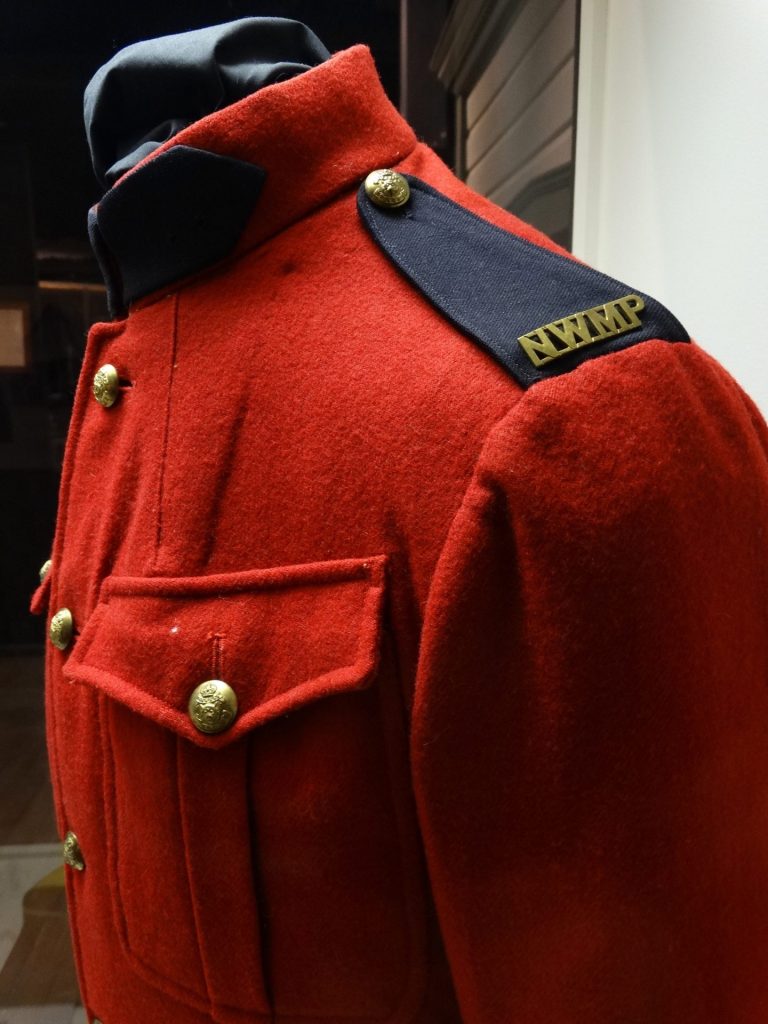
It was the intention of the government to make this force 300 strong, consisting of six troops from A to F, of 50 men each, but as it was considered necessary to send some men at once to Manitoba on account of the expected halfbreed trouble, only two troops were organized in 1873. These were dispatched to Winnipeg, on the Red river, in the summer of that year.
No horses for these two troops were purchased in eastern Canada it being expected that the animals necessary could be got on arrival in Manitoba. It was not intended these two troops should be sent west in to the North West Territories until the complete organization of the force, the following year. As they went by the lakes to Winnipeg the horses and transport were not contracted for and forwarded until the spring of 1874.
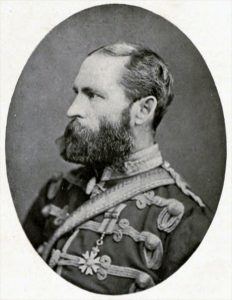
The senior officer and in command of these troops was Lt.-Col. Jarvis, who formerly served in an English regiment, and for many years had been lieutenant colonel of militia in Canada. Lt.-Col. Macleod, the second in command, although a Scotchman, had resided for many years in Canada and had been on the Red River expedition under Sir Garnet Wolseley as brigade major and had received the cross of St. Michael and St. George for his services. This officer at the time of the organization of the force was in England, and was recalled by cable to take the position of inspector to the portion of the force about to proceed to Manitoba.
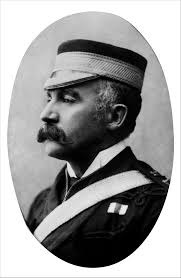
The commissioner, or head of the force, Lt.-Col. French by his rank in the militia of Canada, was an imperial officer of the Royal artillery, being loaned to Canada, as the term then was, to take command of the School of Gunnery at Kingston.
Lt.-Col. French had an active part in the organization of these two troops but did not accompany them to Winnipeg, although he went up shortly afterwards. Until his arrival the two troops were under command of Lt.-Col. Osborne Smith, then military commander of Manitoba, but not connected with the North West Mounted Police.
It will thus be seen that the first detachment sent to Manitoba was more particularly for service during the winter of 1873-74 in Manitoba with the ultimate view of increasing the force to the desired number of 300 and then march westward into the North West Territories in the following year.
The third officer in command of C. troop was Capt. W. Winder, also an officer of Canadian militia and he also formed one of the expedition of 1873. Besides these officers, who commanded the three troops, there were four sub-inspectors, the full complement of six not having been made up. These officers were Captains Brisboin, Thurtcliff, Crozier and Young, all being officers of the militia in Canada.
The journey made by these three troops was tedious and arduous, as they went by way of the lakes. Many portage or transfers of all baggage from one point to another had to be made, but the men behaved well and showed that they had the right stuff in them.
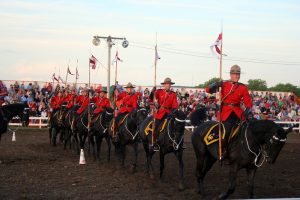 On their arrival at Winnipeg, at that time a small town of a few thousand inhabitants, they took possession of the Stone fort, which was built by the Hudson’s Bay company many years previously. It had been occupied at different times by the Hudson’s Bay Company and by a portion of the troops that came up in the first expedition. The winter spent by the men and officers of these troops was a pleasant one. As with the exception of a few expeditions in the environs of Winnipeg, owing to false rumors of half breed depredation, nothing arose to justify the idea of trouble originally entertained by the government from that source. The time was well spent in drilling the men on foot and horseback and in firing practice. Much had to be done in the way of gaining all the information possible regarding the territory west of Manitoba and in devising the best mode of transport for that long march through an almost unknown country. Transports by carts had to be prepared, guides engaged and march preliminary work done.
On their arrival at Winnipeg, at that time a small town of a few thousand inhabitants, they took possession of the Stone fort, which was built by the Hudson’s Bay company many years previously. It had been occupied at different times by the Hudson’s Bay Company and by a portion of the troops that came up in the first expedition. The winter spent by the men and officers of these troops was a pleasant one. As with the exception of a few expeditions in the environs of Winnipeg, owing to false rumors of half breed depredation, nothing arose to justify the idea of trouble originally entertained by the government from that source. The time was well spent in drilling the men on foot and horseback and in firing practice. Much had to be done in the way of gaining all the information possible regarding the territory west of Manitoba and in devising the best mode of transport for that long march through an almost unknown country. Transports by carts had to be prepared, guides engaged and march preliminary work done.
The time was beguiled by entertainments of all kinds, from dog sleighing to learning the intricacies of the Red river jig with the dark eyed maidens of Manitoba. The officers of the provincial battalion stationed at Winnipeg under command of Lieutenant Colonel Smith showed the greatest courtesy toward those of the police. No doubt there must have been some envy on their part for the lucky fellows who would the next summer make the journey westward across those unknown plains lying between Manitoba and the Rocky mountains. Some disgust must have been felt at their bad luck at having to remain in such an uninteresting place as Winnipeg. In after years, however, many must have congratulated themselves that they had to remain, for on the rapid increase of the population of Winnipeg, and the advance in the value of real estate, many of those officers and men must have made tidy fortunes as there were but few who did not own land either in or near Winnipeg.
These two troops of North West Mounted Police were therefore the first portion of that force to enter Manitoba. They remained there until joined in the following spring by the men and horses that made up the full complement of 300, as originally intended by the Canadian government.
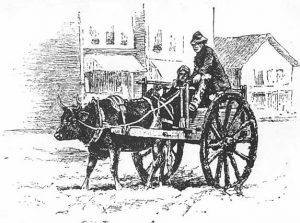 It was difficult to find fit guides to the far west. Although most of the half breeds in Winnipeg had been every summer on the plains after buffalo, they never went west of the Cypress mountains, which lie about 400 miles west of Winnipeg, and the points to which the mounted police were intended to go, lay at least 200 miles west of that point. However some halfbreeds were engaged who pretended to know the country as far west as the Rocky mountains and a large number of Red river carts, drawn by oxen, were also engaged to carry extra supplies and baggage.
It was difficult to find fit guides to the far west. Although most of the half breeds in Winnipeg had been every summer on the plains after buffalo, they never went west of the Cypress mountains, which lie about 400 miles west of Winnipeg, and the points to which the mounted police were intended to go, lay at least 200 miles west of that point. However some halfbreeds were engaged who pretended to know the country as far west as the Rocky mountains and a large number of Red river carts, drawn by oxen, were also engaged to carry extra supplies and baggage.
The boundary line between the United States and the North West Territories was being run on the 49th parallel of latitude, by a large survey party of both American and Canadian engineers, who, as they travelled west, left a plain and broad trail behind them. The instructions of the Canadian government were to the effect that the police should not take this trail, but travel a considerable distance to the north, through country without roads or trails of any sort, so that good guides were indispensable. The boundary surveyors in the spring of 1874, when the police started on their westward journey had nearly finished their survey. Long before our arrival in the west they had completed the line to the boundary between British Columbia and the North West Territories.
In the spring of 1874 the remainder of the force was organized in Canada, amounting to some 200 men. Supplies were purchased together with over 350 head of horses of a very good class, for team and saddle. These horses were picked, and large prices paid for them, an average of $125 each. A large number of wagons were also purchased. They were supposed to carry not over 3,000 pounds each. Tents and other camping materials of the best were procured and two nine-pounder rifled guns sent from England, with suitable ammunition, were taken along. These guns might have been left behind, as it turned out that their services were never required.
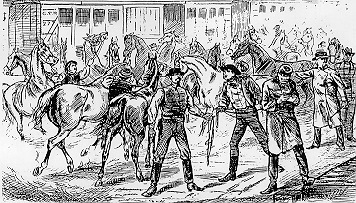
The headquarters of the new force was in Toronto, at the old fort, which had been used in previous years by whatever Imperial regiment was stationed at that place at the time. The barracks were good, with stables, parade ground and officers quarters.
Our time was occupied from the spring until June 6, on which day we left Toronto, in drilling the men, in both mounted and foot drill and firing practice, also in enlisting men. There were large numbers to pick from, of all nationalities and standing in society. Many young Englishmen of good family enlisted. The examination was of the strictest. Only those of the very best physique were taken, and a fair education was required. Our regimental sergeant major was an old Imperial officer, having held a captain’s commission in one of the Hussar regiments. There were also a considerable number of old army men among us, who had seen considerable service. The 200 men were of the best possible stamp for the work before them. The officers had for the most part belonged to the Canadian militia and were all enthusiastic over the journey before them into the almost unknown country.
The commissioner or commander of the force was Lieutenant Colonel French, of the Royal artillery. His brother also held a commission as inspector. He was an old Irish militia officer. Many an evening did we spend in our mess room, listening to what information the commissioner could give us as to the country we were going to and what work we should find cut out for us when we arrived there.
It was understood that very little personal baggage was to be taken along, as the transport was limited and it would take nearly all of it to convey provisions and forage. It is curious today to remember what a vague idea we really had of the journey before us, and of the country westward along the mountains. I doubt if any expedition of such importance ever before undertook a 700-mile journey across vast plains without competent guides, believing that at the end of it, they would have to subdue lawless bands of desperadoes, with such complete faith in themselves and such utter ignorance of what they were undertaking.
Our stay in Toronto was taken up with hard work. For not only were most of the men to be drilled, but many of the officers, and in the three months we were at it, much progress was made. When we left we were a fairly organized force.
The people all over Canada took the greatest interest in our organization and success of the expedition and many were the good wishes and kindnesses we received. The journey all through was watched by almost everyone in Canada and many in England, and the greatest anxiety was manifested as to our fate, when many months passed after our departure, without word of any kind being received from us.
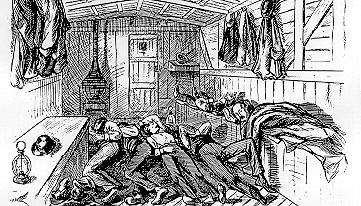
The spring had been spent in organizing the force and it was necessary to make as early a start as possible. We had to meet near Winnipeg that portion of the force which had been the previous winter stationed at that point and a considerable delay was expected to complete the organization with them. We had to distribute to them their share of the horses and transport and fitting up those troops with their proper complement of men. As it was form that point the real start was to be made, much information would have to be secured as to the best route to take and guides to be engaged. We were to go by rail via St. Paul, Minn., and from there by rail to Fargo, N.D. From there we should put our transports together and journey overland by permission of the United States government to Ft. Dufferin, about 180 miles distant, in Manitoba.
After much delay the department officials had completed the purchase of the remaining supplies. Lieutenant Colonel Richardson, of the department of justice, under which the police force then was, being a civil one, although guided in military matters by the Queen’s regulations, arrived from Ottawa before our departure and had a last conference with the commissioner. He also conveyed the last instructions from the Dominion government. We were ready to load our transport horses and baggage on Friday, June 5, 1874, in two special trains that were to take us through without change via Chicago and St. Paul to Fargo, in Dakota. This was all finished after the hardest kind of work. Both men and officers had their hearts in the work and it was finished in good style and in a very short time considering the loading. The horses gave use the hardest work. It is no small job to load 350 horses, in find condition and unused to railroad travelling. Lieutenant Colonel Richardson was present and many were the useful hints he gave us.
We were from the start to the finish the objects of the greatest interest to the public, being surrounded from morning to night with crowds of people, ever ready to assist us. There was nothing they would not and did not do for us. However by the morning of June 6 we were ready to start and many were the adieus spoken and kind wishes given and presents forced upon the men. We left about mid-day, amid the blast of bands, explosions of torpedoes, and encouraging cheers.
Our journey I will leave to be described in another chapter.
Continued in Off for the West.







Leave a Reply